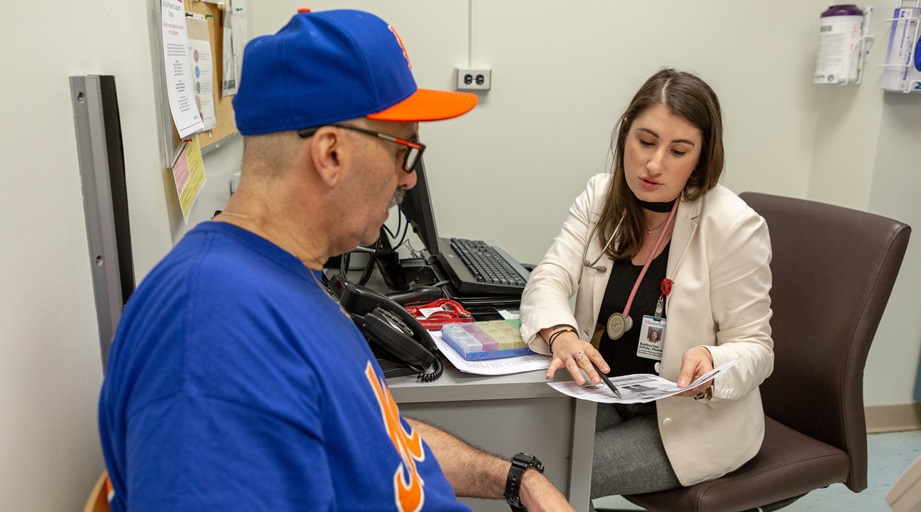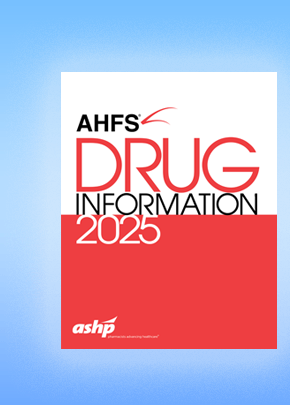
Biosimilars are here and here to stay as the fastest-growing class of medications in the United States. These novel drugs can decrease the cost of care to improve medication access, adherence, and persistence — but incorporating them into practice is far from simple.
Hot Sauce! Navigating the Spicy Landscape of Biosimilars in Specialty Pharmacy oriented ASHP Midyear Clinical Meeting and Exhibition attendees to the benefits of biosimilars, the barriers standing in the way of adoption, and best practices for integrating biosimilars within specialty pharmacy.
“I would encourage organizations to consider their biosimilar strategy, because more and more are coming on the market, and this isn't going away,” shared presenter Alex Mersch, assistant director for ambulatory specialty programs at University of Iowa Health Care.
Biosimilars have been Food and Drug Administration-approved for treating many diseases, including diabetes, cancer, and osteoporosis, and they have shown particular growth in the specialty pharmacy take-home prescription space. These medications are highly similar to and produce no clinically meaningful differences from their respective biologics, also known as reference products. Those that generate the same results as their reference products may meet standards for interchangeability and open even more options for drug substitution in clinical care, although laws vary by state.
“Biosimilars have been on the market for close to a decade, and I would say that they’re starting to hit their exponential phase of approval and integration in the healthcare landscape,” said Mersch.
Biosimilars may be ubiquitous, but uptake in the marketplace doesn’t follow a consistent pattern. One 2023 report showed biosimilars with market shares ranging from 13% for infliximab to 82% for bevacizumab three years after their respective introductions.
This is partly because integrating biosimilars into a pharmacy practice can introduce risk and uncertainty for health systems, the presenters stated. The influx of newly approved biosimilar products increases the complexity of care, creating room for errors and inefficiencies as well as new inventory and budget considerations — not to mention the time and energy required to manage it all. Lower medication costs can also mean lower revenue from reimbursements, and pharmacy leaders must anticipate the economic impact on their organizations.
Other forces are at work, noted Shubha Bhat, a clinical pharmacist in gastroenterology at the Cleveland Clinic. “Institutions need to be prepared, and the marketplace needs to be favorable for these products,” she said. “We all know that just because a payer will cover a medicine, it doesn’t necessarily translate into successful uptake.”
For biosimilars to achieve their full potential, healthcare professionals must also grow more comfortable with recommending the medications. In one study shared, 84% of physicians disapproved of switching to biosimilars in stable patients for reasons other than health and safety. In another, only 13% of pharmacists practicing in rheumatology, dermatology, and gastroenterology felt very prepared to talk to patients about biosimilars.
Meanwhile, patients must learn what biosimilars are and how the drugs might affect their treatment plans. People may perceive biosimilars as lower quality than their reference products because of the lower costs or find limited support for biosimilar medications among patient advocacy groups. This scenario potentially sets patients up for the nocebo effect, which happens when negative expectations render a treatment less effective or exacerbate side effects. Up to 83.6% of biosimilar discontinuations are caused by the nocebo effect, noted presenter Amanuel Kehasse, an ambulatory clinical manager of specialty pharmacy at the Boston Medical Center Health System.
“Our job is to make sure that we understand patients’ concerns [about switching to biosimilars] … so we can move more of them into the category where they are willing to change,” he said.
With consistent, evidence-based messaging and shared decision-making, physicians and pharmacists can help patients understand the clinical and financial implications of taking a biosimilar, Kehasse added. To truly close the knowledge gap, practitioners must stay up to date on the evolving landscape and laws about biosimilar prescribing and dispensing.
For best success, Mersch recommended pharmacy organizations conduct a SWOT (strengths, weaknesses, opportunities, and threats) analysis and financial modeling to determine which branded or unbranded biosimilars make the most sense to introduce, given patient demographics and available resources.
Pharmacy teams should oversee these multidisciplinary, data-driven efforts, including outreach to payer and manufacturing stakeholders, he added. A sustainable biosimilar strategy has leadership buy-in and includes proactive monitoring of outcomes for both the health system and its patient population — a process that should become more efficient with time.
Said Mersch, “The lessons you learn and the workflows you develop to onboard one biosimilar will pay dividends later on for your organization.”








